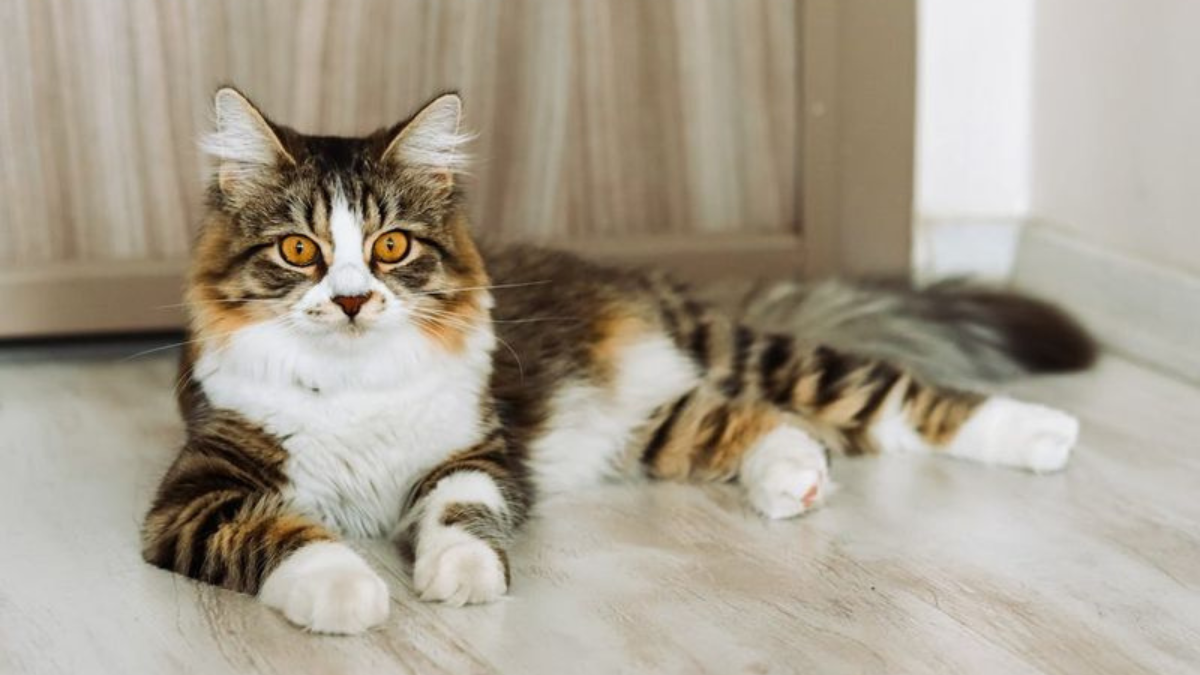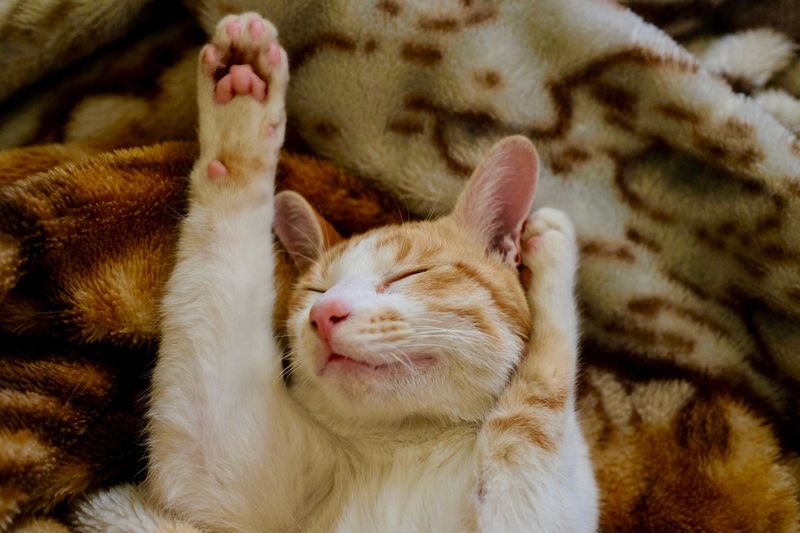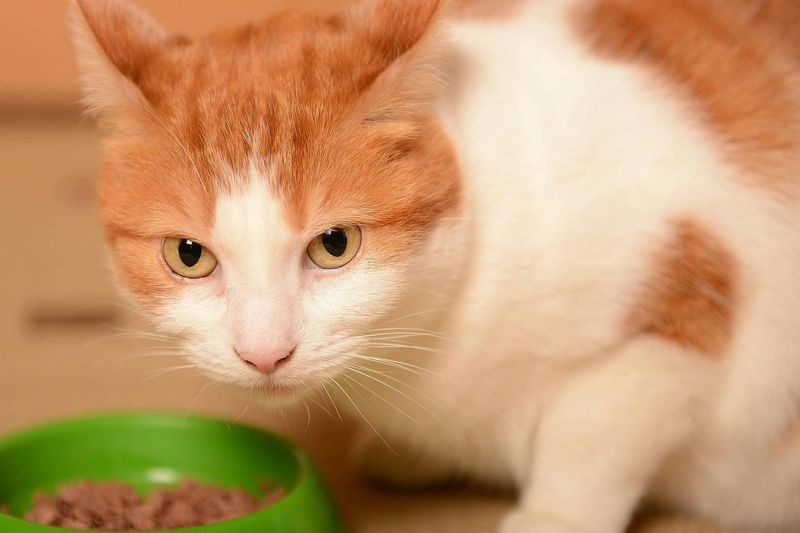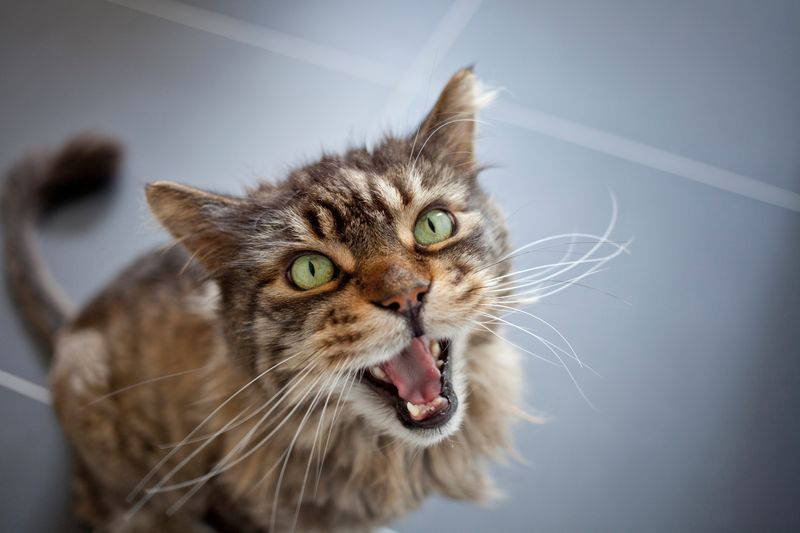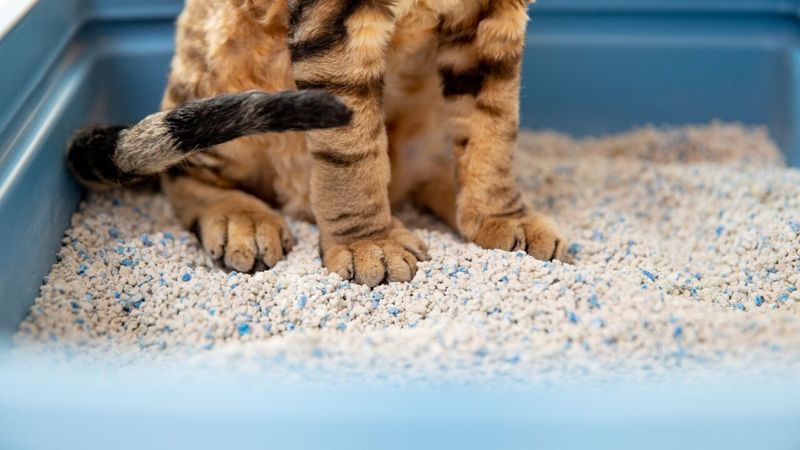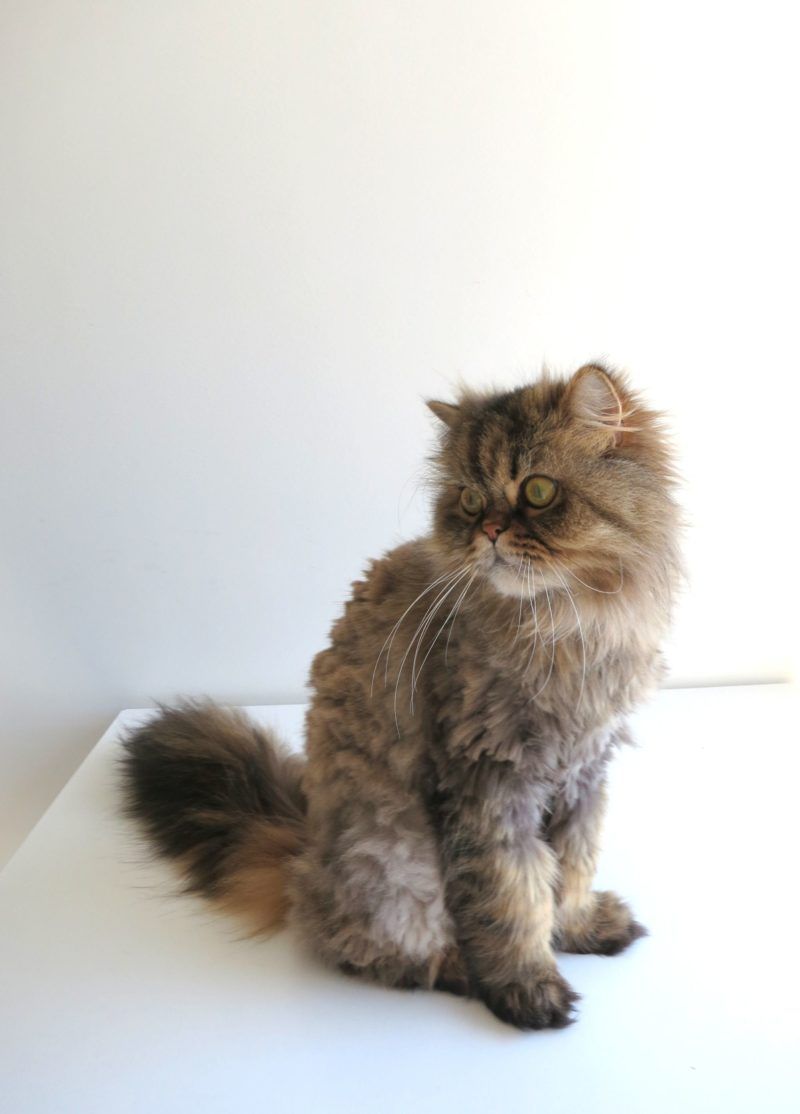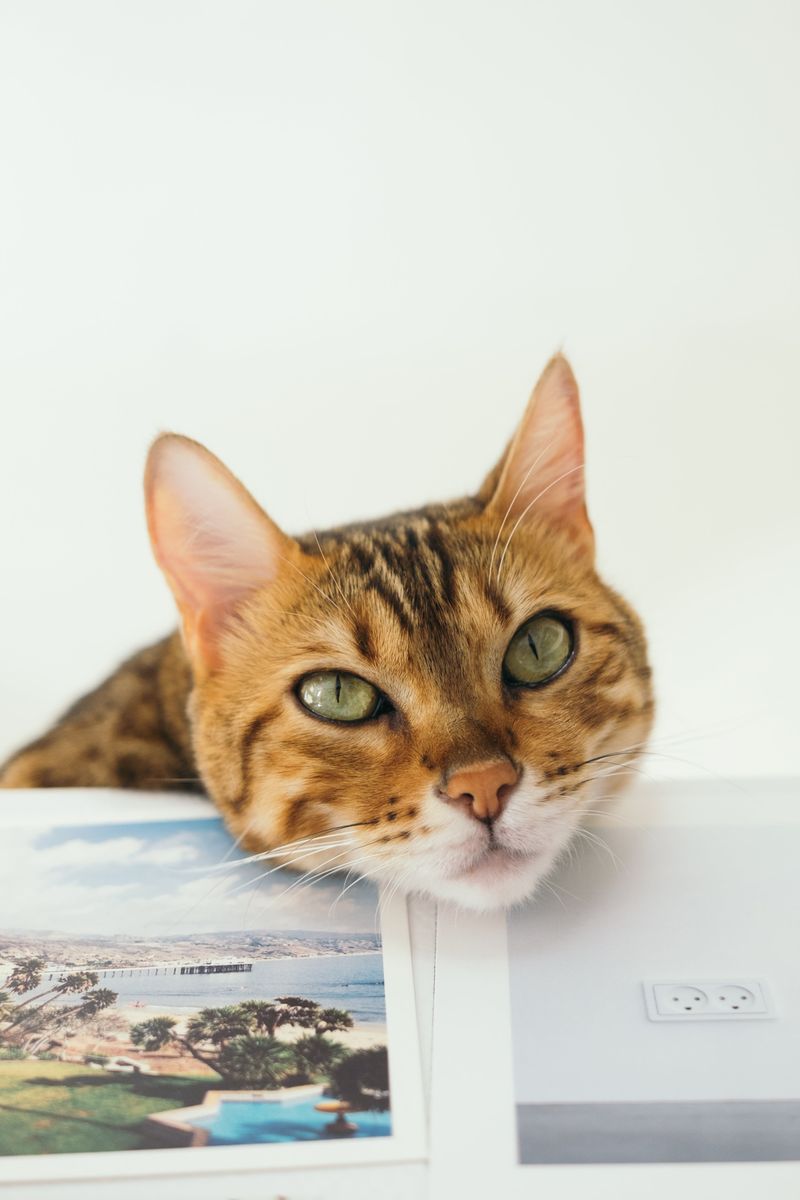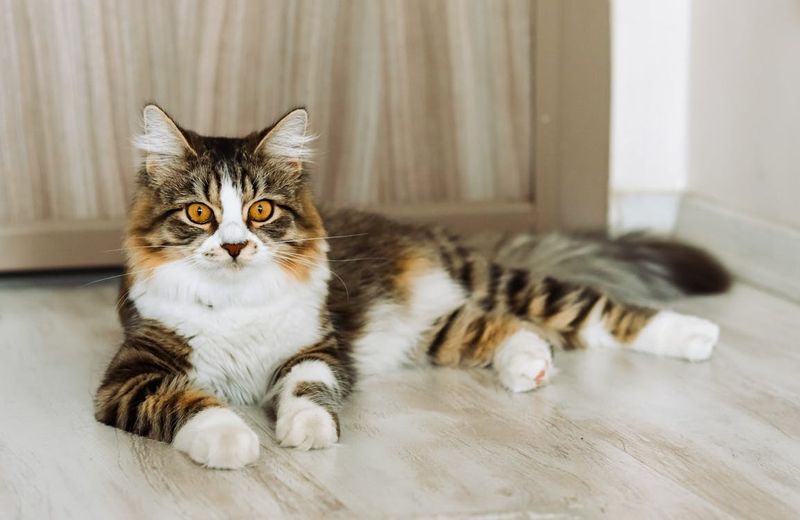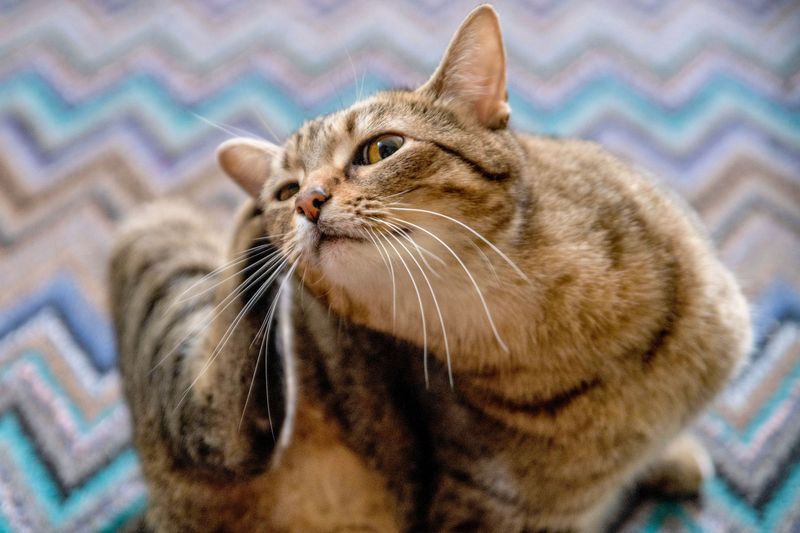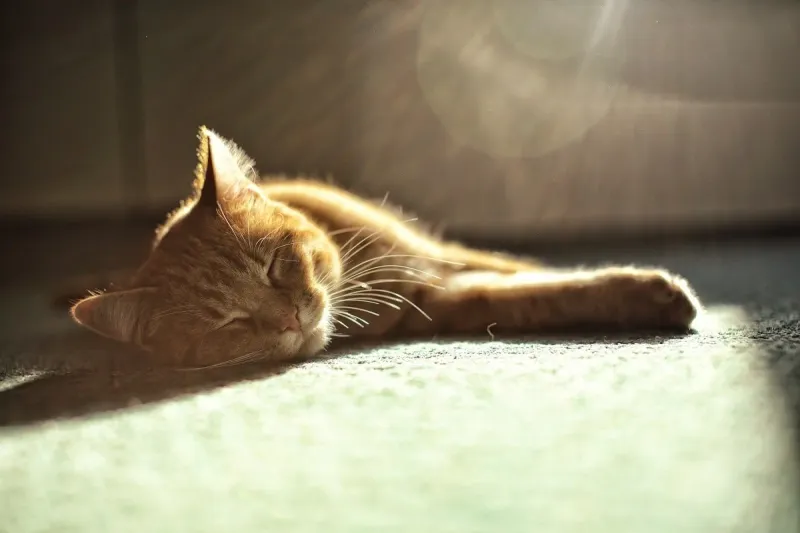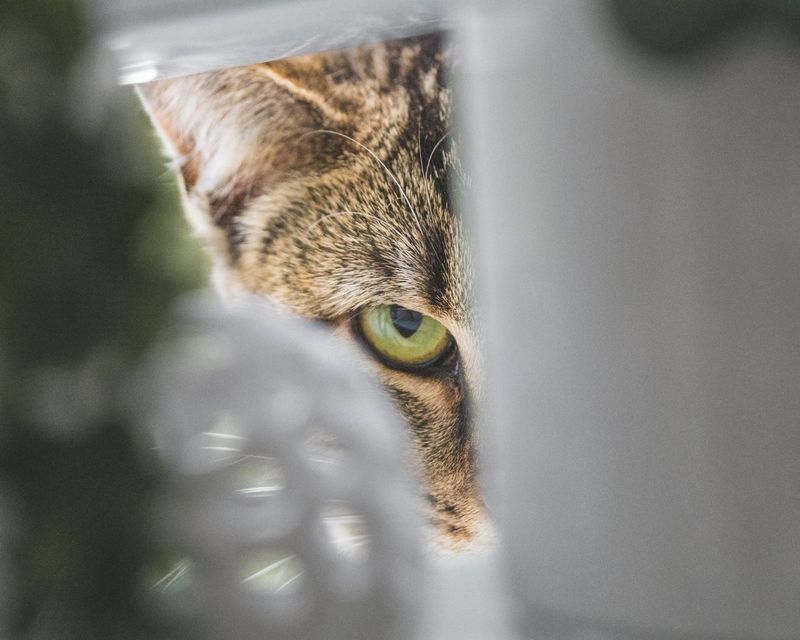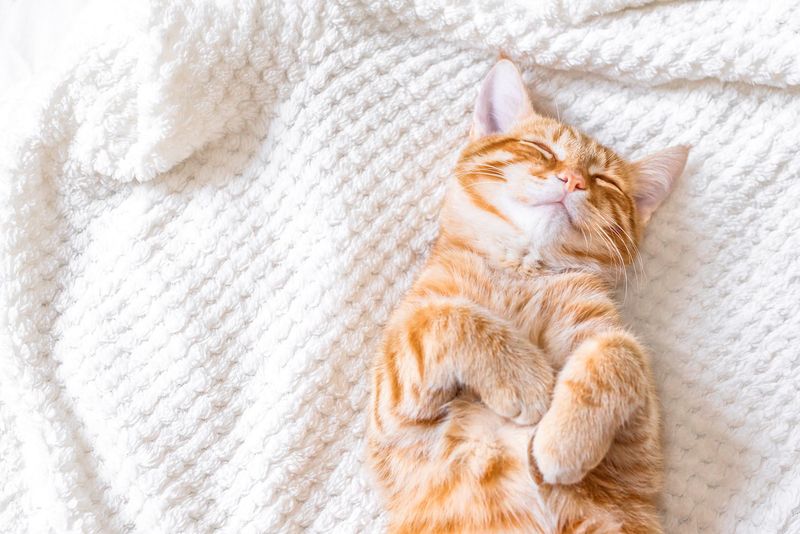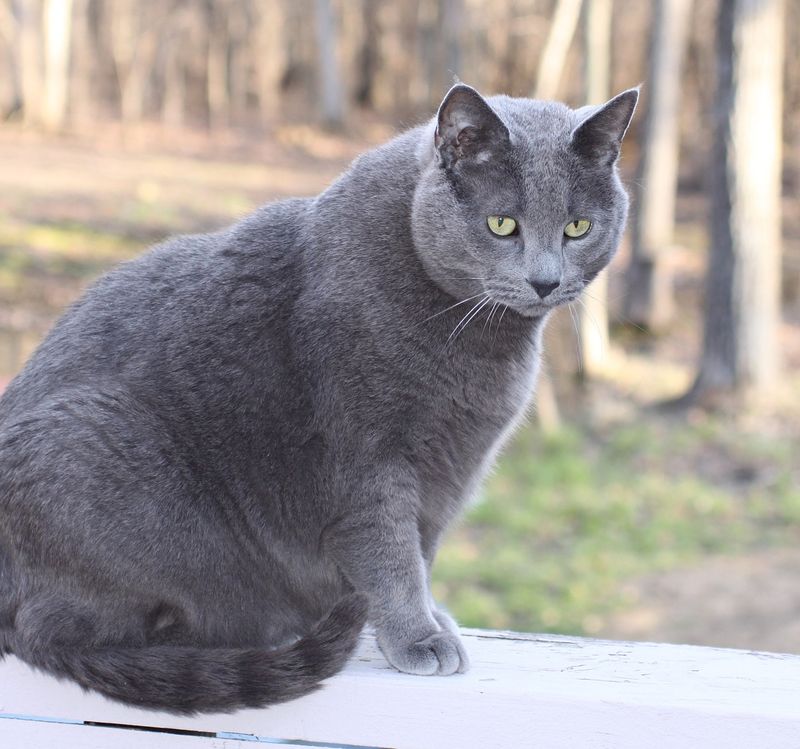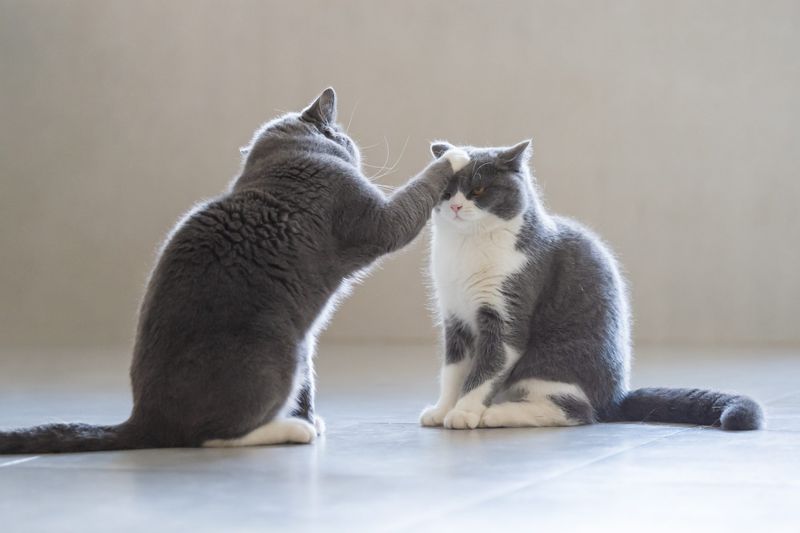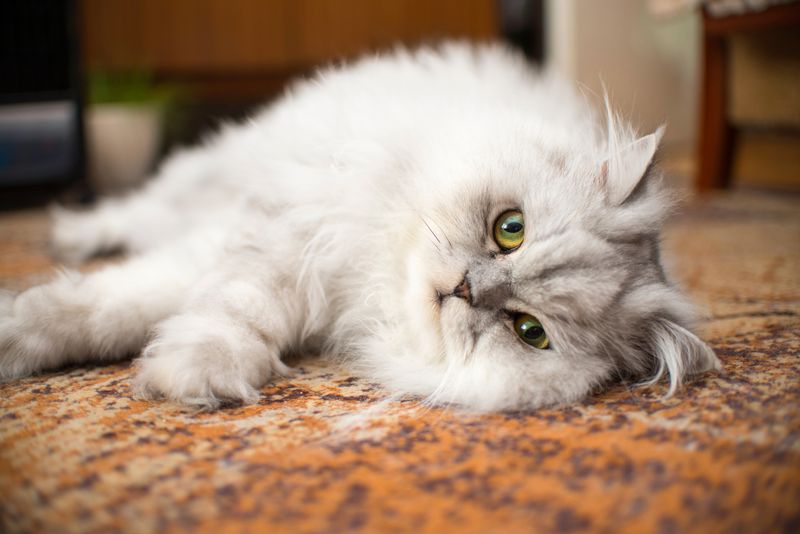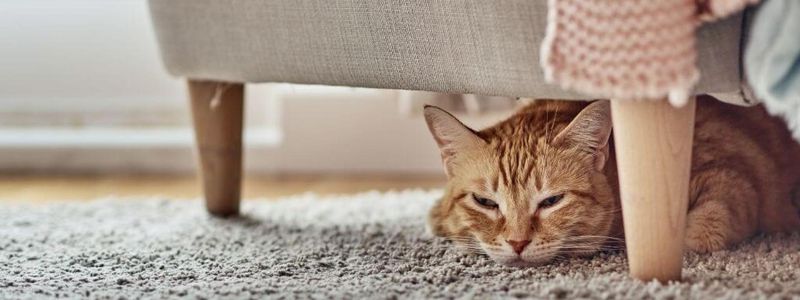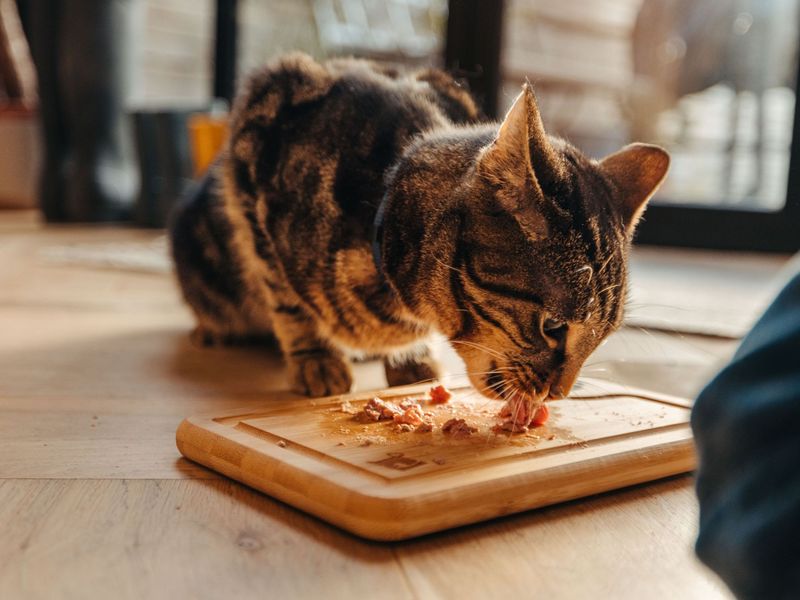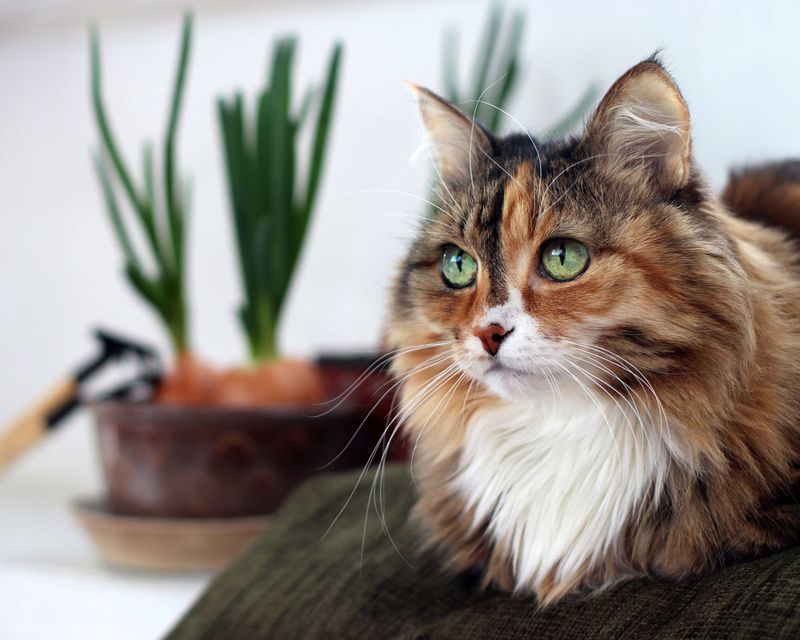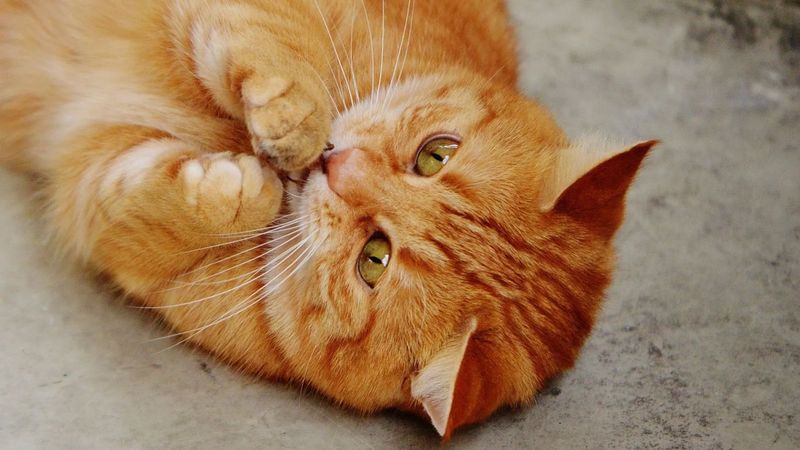📖 Table of Content:
- 1. Increased Sleeping
- 2. Reduced Appetite
- 3. More Vocalization
- 4. Litter Box Issues
- 5. Decreased Grooming
- 6. Increased Affection
- 7. Avoidance of High Places
- 8. Changes in Play Behavior
- 9. Increased Sensitivity to Temperature
- 10. Hiding More Frequently
- 11. More Frequent Napping
- 12. Noticeable Weight Changes
- 13. Altered Social Interactions
- 14. More Time Spent Indoors
- 15. Heightened Sensitivity to Noise
- 16. Changes in Eating Habits
- 17. Cognitive Changes
- 18. Slower Movements
As cats grow older, they often show changes in behavior that may catch their owners off guard. These alterations are usually the result of physical and emotional shifts occurring as they age. Recognizing these changes is vital for ensuring they receive the care and attention they need during their senior years.
Aging cats may begin to develop new habits, such as changes in activity levels or preferences for certain types of environments. These adjustments are often driven by factors like declining mobility, altered senses, or simply the need for more rest. It’s essential to approach these shifts with understanding and patience to help them feel comfortable and secure.
Being aware of the common behavioral changes that occur as cats age can make a significant difference in how their needs are met. Adapting to these changes with empathy will strengthen the bond between cat and owner. With the right care and attention, older cats can continue to live happy, fulfilling lives.
1. Increased Sleeping
As cats grow older, they tend to sleep more. This increased need for rest is due to their bodies slowing down as they age. Elderly cats may spend more time napping during the day, finding comfort in warm, soft places. It’s not uncommon for them to seek out their favorite spots and become less active overall.
This shift is perfectly normal, but owners should ensure that their cat’s sleeping area is comfortable and easily accessible. Keeping an eye on their sleeping patterns can also help detect any significant changes that might indicate health issues.
2. Reduced Appetite
Many aging cats experience a decrease in appetite. This can be attributed to a variety of factors including dental issues or diminished senses of smell and taste. Owners might notice their cats eating less or being pickier about their food.
It’s important to monitor their weight and ensure they receive adequate nutrition. Consulting with a veterinarian can guide dietary adjustments to suit an aging cat’s needs. Offering smaller, more frequent meals or trying different food textures can sometimes rekindle their interest in eating.
3. More Vocalization
Meowing or yowling more often can be a sign that a cat is feeling discomfort, confusion, or loneliness. These increased vocalizations are frequently observed at night, which may interrupt the sleep of everyone in the home. Recognizing this behavior allows owners to address their cat’s needs effectively.
Providing reassurance and a cozy, quiet sleeping environment may help alleviate some of their anxiety. It’s essential to listen to the cat’s cues and consider a veterinary check-up to rule out any underlying medical conditions. Understanding and patience are key in addressing this behavior shift.
4. Litter Box Issues
Litter box problems are common in aging cats, often caused by arthritis or cognitive decline. These issues can make it difficult for cats to access the box or remember to use it. Providing easy access to the litter box and adding extra boxes can help prevent accidents and support your cat’s well-being.
Switching to a lower-sided box can also assist an elderly cat. Monitoring and cleaning the litter box regularly will help in identifying any patterns or changes. Veterinary advice can be beneficial in managing this issue effectively.
5. Decreased Grooming
Over time, cats may begin to groom themselves less frequently, resulting in matted fur or dandruff. Arthritis, dental pain, or decreased flexibility can make this process more challenging. Regular grooming from their owners can help keep their coat healthy and prevent discomfort.
Regular brushing can help maintain their coat and strengthen the bond between the cat and the owner. Paying attention to their grooming habits is essential to identify any health concerns early on. Providing gentle assistance in grooming can also comfort the cat and improve their overall well-being.
6. Increased Affection
Seeking extra affection and closeness, some cats may want more attention from their owners, whether through more lap time or simply staying near them. These behaviors usually stem from a desire for reassurance and a sense of security. It’s their way of reinforcing the bond they share with you.
Responding with gentle petting and extra cuddle time can enhance the cat’s sense of security and happiness. Recognizing and reciprocating this increased need for affection can enrich the bond you share with your feline friend.
7. Avoidance of High Places
High places that once served as favorite resting spots may become less inviting to aging cats, as arthritis or joint pain limits their ability to jump or climb. Instead, you might see them spending more time on the floor, seeking out lower resting areas. Installing ramps or steps can allow them to access those higher spots more comfortably.
Observing their movements and ensuring their environment accommodates their needs can greatly improve their quality of life. A veterinary consultation can also offer insights into managing any underlying joint issues.
8. Changes in Play Behavior
The play habits of older cats often evolve, with less focus on fast-paced activities and more interest in quieter, more soothing pastimes. You may notice them interacting with toys less, or for shorter periods. Even so, it’s essential to provide mental and physical challenges that align with their comfort.
Introducing interactive toys that encourage gentle play can keep them engaged without overexertion. Regular playtime fosters mental sharpness and physical health, benefiting both the cat and the owner.
9. Increased Sensitivity to Temperature
Older cats can become more sensitive to temperature changes, seeking warmth more avidly during cooler months. They might be found basking in sunny spots or snuggling closer to heaters. Ensuring they have access to cozy, warm places can provide comfort and prevent discomfort.
Conversely, during warmer weather, they may need cooler resting areas. Monitoring the home’s temperature and making adjustments as needed will ensure their comfort year-round. Understanding these preferences helps in creating an environment that caters to their aging needs.
10. Hiding More Frequently
When the world becomes overwhelming, some cats may choose to hide, looking for calm and comfort away from the bustle. Whether it’s physical discomfort or the need for a peaceful retreat, this behavior is not unusual. Offering them soft, secluded spots to rest can help ease their worries.
Observing their behavior and consulting with a veterinarian if concerns arise can help identify any underlying issues. Providing a calm and stable environment will support their emotional well-being.
11. More Frequent Napping
Apart from sleeping more, older cats may nap more frequently throughout the day. These shorter, restful periods contribute to their overall need for increased rest. A cat that previously seemed restless might now enjoy lounging in quiet, cozy spots.
This shift is often accompanied by a decrease in energy levels, reflecting their slower pace of life. Owners should ensure their cats have numerous comfortable napping locations. Observing these changes helps in understanding their evolving habits and ensuring their comfort.
12. Noticeable Weight Changes
When a cat’s weight changes dramatically in their senior years, it could indicate a health concern, like thyroid issues or diabetes. Weight loss or gain should not be overlooked, as they often suggest underlying medical conditions.
Adjusting diet and portion sizes can help manage these changes, ensuring proper nutrition. Regular veterinary check-ups are vital in maintaining their overall health. Awareness of these fluctuations aids in the early detection of potential medical concerns, contributing to a healthier life.
13. Altered Social Interactions
Elderly cats may exhibit changes in how they interact with other pets or humans. Some might become more reserved, while others seek more attention. Owners should observe these interactions, recognizing that each cat’s social needs can vary widely.
Providing a harmonious environment that respects their preferences enhances their quality of life. In multi-pet households, ensuring that all pets have their own space and resources helps minimize stress. Understanding and catering to their social cues fosters a peaceful coexistence.
14. More Time Spent Indoors
Indoor spaces become more appealing to older cats, who may seek out safe, quiet environments where they can feel secure. The change in preference might be due to a decreased interest in outdoor exploration or a need for familiar surroundings. Offering stimulating toys, scratching posts, and soft resting areas can keep them active and content.
Ensuring windows offer views of the outside world can satisfy their curiosity without the risks of the outdoors. Accepting this change and adapting their environment enhances their happiness.
15. Heightened Sensitivity to Noise
With age, many cats become more reactive to loud or unexpected noises, which can heighten their stress and anxiety levels. This sensitivity can make a previously calm environment feel uncomfortable. Providing secluded, quiet areas and minimizing noise can help your cat feel more at ease.
Understanding their triggers and observing their reactions can guide adjustments to their environment. This consideration supports their emotional well-being and ensures a peaceful living space.
16. Changes in Eating Habits
A change in food preferences often occurs as cats age, with many becoming more discerning about textures and flavors. Dental problems or a reduced sense of smell are typically the culprits behind this. Offering a diverse range of foods, both wet and dry, helps ensure they enjoy their meals.
Consulting a veterinarian can provide insights into dietary needs and appropriate supplements. Being attentive to these shifts ensures they receive proper nutrition and enjoy their meals.
17. Cognitive Changes
Cognitive decline is not uncommon in older cats, leading to confusion or forgetfulness. This might manifest as disorientation, altered sleep-wake cycles, or changes in social behavior. Owners can support their cats by maintaining a routine and providing interactive toys that stimulate their minds.
Consulting a veterinarian about supplements or therapies can benefit cognitive health. Observing these changes and adapting their care accordingly ensures a supportive environment. Patience and understanding are key to helping them navigate these challenges.
18. Slower Movements
Movement becomes more deliberate as cats age, often due to joint issues or muscle weakness. They may hesitate before jumping or climbing, choosing to move more cautiously. Creating a comfortable, obstacle-free space can help them move around more easily and reduce strain on their joints.
Regular veterinary check-ups can help manage any underlying conditions, such as arthritis. Recognizing and adapting to their needs ensures they remain comfortable and active as they age gracefully.
